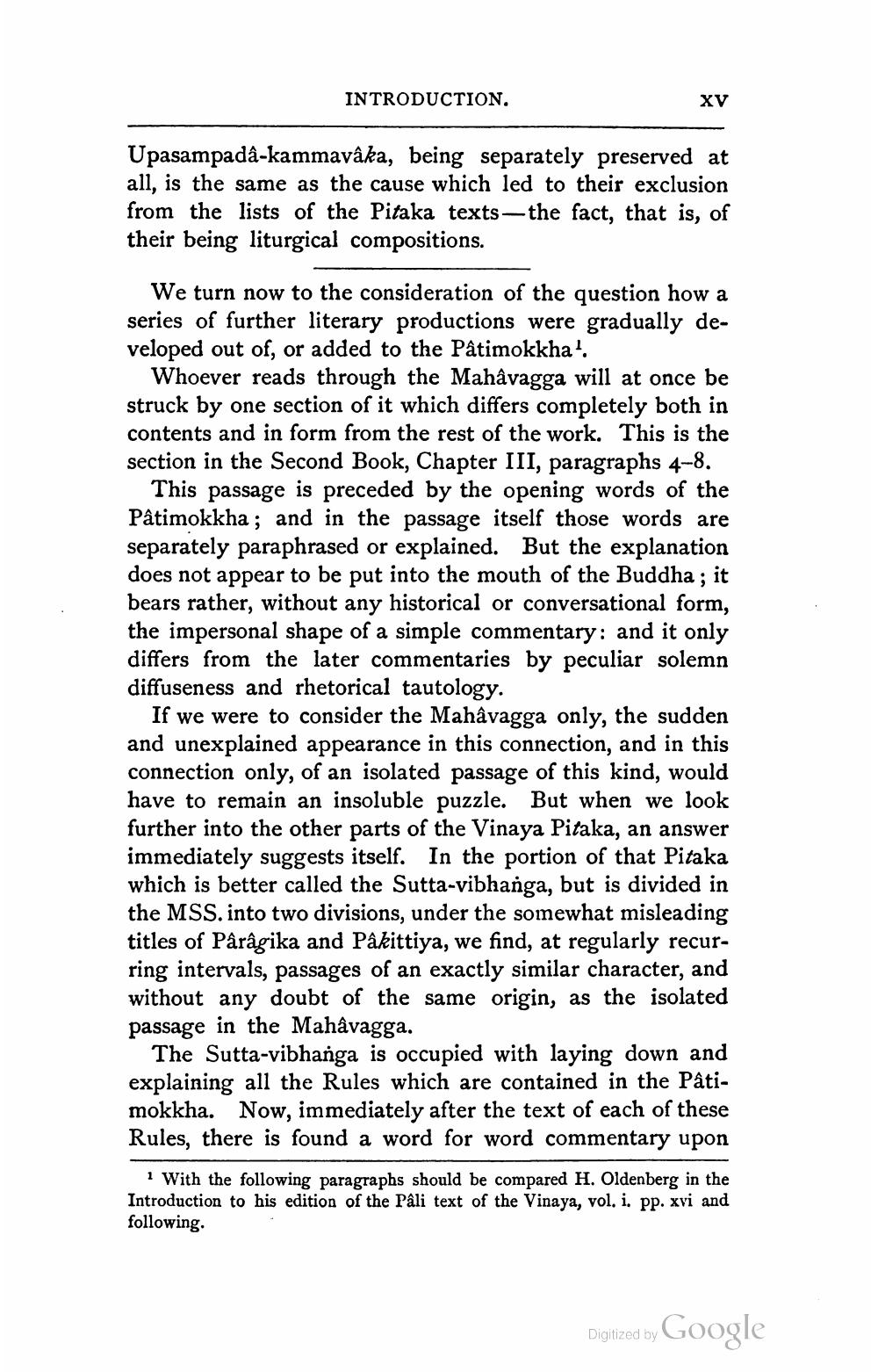________________
INTRODUCTION.
XV
Upasampadâ-kammavâka, being separately preserved at all, is the same as the cause which led to their exclusion from the lists of the Pitaka texts-the fact, that is, of their being liturgical compositions.
We turn now to the consideration of the question how a series of further literary productions were gradually developed out of, or added to the Pâtimokkha1.
Whoever reads through the Mahâvagga will at once be struck by one section of it which differs completely both in contents and in form from the rest of the work. This is the section in the Second Book, Chapter III, paragraphs 4-8.
This passage is preceded by the opening words of the Pâtimokkha; and in the passage itself those words are separately paraphrased or explained. But the explanation does not appear to be put into the mouth of the Buddha; it bears rather, without any historical or conversational form, the impersonal shape of a simple commentary: and it only differs from the later commentaries by peculiar solemn diffuseness and rhetorical tautology.
If we were to consider the Mahâvagga only, the sudden and unexplained appearance in this connection, and in this connection only, of an isolated passage of this kind, would have to remain an insoluble puzzle. But when we look further into the other parts of the Vinaya Pitaka, an answer immediately suggests itself. In the portion of that Pitaka which is better called the Sutta-vibhanga, but is divided in the MSS. into two divisions, under the somewhat misleading titles of Pârâgika and Pâkittiya, we find, at regularly recurring intervals, passages of an exactly similar character, and without any doubt of the same origin, as the isolated passage in the Mahâvagga.
The Sutta-vibhanga is occupied with laying down and explaining all the Rules which are contained in the Pâtimokkha. Now, immediately after the text of each of these Rules, there is found a word for word commentary upon
1 With the following paragraphs should be compared H. Oldenberg in the Introduction to his edition of the Pâli text of the Vinaya, vol. i. pp. xvi and following.
Digitized by
Google




